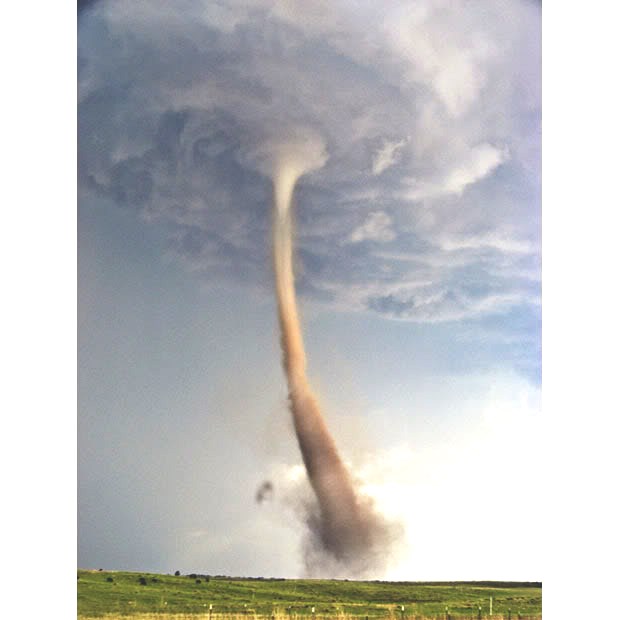Growing up, it was an annual event in our home to watch the Wizard of Oz movie. I was fascinated with the tornado and remember thinking how I might try to outrun one if I ever had the opportunity. It was years before I realized that tornado’s were real and run rampant through our Country. I also realized that you can’t out run a tornado!
My closest first hand experience was in 2009 when I was driving from Orlando to Atlanta and I happened to stop in Macon, GA to get gasoline and lunch. As I drove into the town, I thought I was on a movie set. Trees were bent sideways, roofs were off of stores and homes, and I found out quickly that a tornado had just been there the day before. What was strange was seeing a hamburger place open for business and there was not a roof on the building. Life continued on, and the town was rebuilt the next time I drove through. As with any natural disaster, you need to build your emergency tool box and be ready!
Here’s a quick test to check your level of preparedness:
- If the next big storm strikes your community and you have just minutes to run to safety, can you leave your home in 5 minutes with everything you need to relocate if your home is destroyed?
- Do you have your personal, legal and financial documents in one location?
- If you have to shelter in your home for a week without power, do you have enough food, water, tools and first aid supplies?
These are tough questions, but they need to be answered and most people I meet are not able to say “Yes” to all of the above. I teach people how to build an emergency tool box. As with a normal tool box, you have tools that you know how to use when you need them. Most of us do not use our tools every day, but they are there when needed. This holds true for any emergency tool box. You assemble it, know how to use each emergency tool, and then you put it away until you need it.
My emergency tool box includes all of my documents, important photos, a 3-day Get Away Bag for everyone in the family, including pets, and a shelter-in-place kit for surviving 5-7 days in my home without power. If you don’t have your emergency tool box completed, I suggest that you give yourself 15 minutes a day and get started. Set your kitchen time, get your copy of My Life in a Box, and start locating the documents that are listed in Chapter Two. Once that is completed, pick up a file and sort the documents into the 6 files and you are set to go. Also make sure that everyone in your family has filled out the forms in the back of the book…just in case!
How to Rank a Tornado
Did you know that tornado’s have struck in every state, including Alaska and Hawaii. Hawaii has had 28 tornado’s touch down between 1950 and 1996, most of which were only category “F1”.
I find that kind of trivia interesting, especially since I use to live and work in Hawaii. However, most tornadoes form in a belt from Nebraska, through central Texas known as “Tornado Alley” as well as in the Southeast part of the United States.
Dr. T. Theodore Fujita first introduced The Fujita Scale in a research paper, published in February 1971. He created a ranking that categorized each tornado by intensity and area. The Greensburg tornado was a category F-5.
The scale was divided into six categories:
F0 (Gale)
F1 (Weak)
F2 (Strong)
F3 (Severe)
F4 (Devastating)
F5 (Incredible)
Many thanks to the NOAA website (National Oceanic and Atmospheric Association) for this information.

